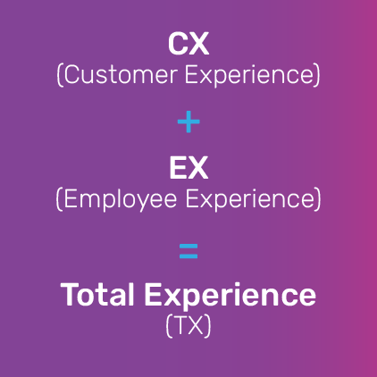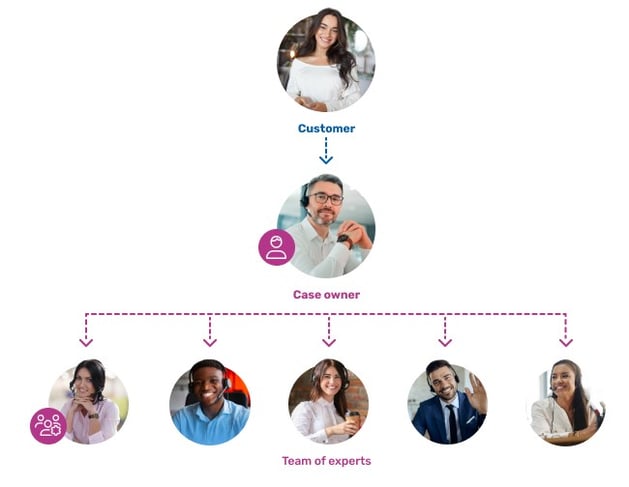Six little-known ways unified search improves workplace productivity (which is your organization doing?)

Your organization can have the deepest expertise, the most valuable knowledge base, and the best-crafted content on the planet, but if the people looking for it can’t find it when they need it, it’s worthless.
It’s in this “last mile” of knowledge management that organizations often fall flat. Conventional enterprise search is too siloed and inflexible for modern needs. Today’s firms are quickly realizing value of AI-powered unified search, which flips things around and causes relevant content to come to the user, rather than requiring the user to go on a frustrating and sometimes fruitless hunt for content.
I’ve written about how unified search enhances the customer experience, but to truly be customer-centric, organizations need to focus on the total experience: the holistic experience of all stakeholders, external and internal.
stakeholders, external and internal.
Internal teams can reap tremendous benefits from intelligent, unified search capabilities—after all, when your employees are efficient and productive, it has a halo effect on CX.
Unified search can improve the overall employee experience, enhance your workplace culture, and improve productivity. This, in turn, allows your team to help customers even more, creating a virtuous circle of continuous improvement.
In this article, I outline six powerful ways unified search can improve workplace productivity.
1. Expertise location
The subject matter experts (SMEs) in your organization possess a wealth of valuable information that is difficult to leverage optimally. Unified search can bridge the gap by instantly offering up the most relevant information from disparate data repositories to customers and employees when they need it.
AI-powered unified search engines like Coveo index your directories of team information and metadata to understand who the best people are for each customer inquiry. They can provide a personalized search experience by connecting best experts to the customer based on the case/query.
For example, we deployed intelligent unified search on a Slack channel for a Fortune 1000 global cybersecurity company, integrating it with their knowledge base and support ticketing system. That way, when support agents spin up a Slack channel to swarm or collaborate on a support case, intelligent search provides an initial list of content from the knowledge base based on the case subject while the agents wait for the rest of the team to join, speeding up case resolution.

2. Intranet portals
Your intranet can be one of the most helpful tools for enabling your team to support internal customers and thus drive organizational growth. Enabling intelligent unified search can make it the go-to resource for employees through personalized content results and recommendations for individuals and teams. Coveo provides the right information at the right time and, with its dozens of connectors and API options, can dramatically improve your intranet’s usability and value without requiring you to give up the tools your employees already know and love.
We implemented unified search on the employee intranet of one of our enterprise customers to enable team members to quickly find the information they need, regardless of where in the company ecosystem it resides. Previously, sales engineers would email product managers to get information, with all its inherent delays. Now, they have an interactive form on the intranet that automatically provides recommended answers as they write in their questions, “deflecting” a lot of unnecessary email correspondence and saving time.
3. Employee self-service
Intelligent unified search can be used to power employee self-service just like it is used to help customers self-serve.
Coveo’s unified search solution provides smart search results to help your employees find the information they need, fast. In many cases, it can even provide intelligent recommendations before the employee finishes typing a search query! Additional help can come in the form of AI-powered chatbots that provide that personal touch without tying up an actual person.

A specific implementation of this that iTalent has done is adding unified search to the online support portal. The intelligent recommendations engine suggests helpful content dynamically based on the information written into the case creation form. The UI is responsive, so it’s easy to use whether the user is on a laptop, tablet, phone, or other device.
This same functionality can be applied internally, for example, to help newly onboarded employees find information faster or to better communicate new information being rolled out to existing employees.
4. Knowledge management intelligence
As your organization grows, your institutional knowledge—which represents the collective understanding and capabilities of the workforce—grows with it. As they say, knowledge is power, but that only applies if you can find what you need when you need it. As quantities of knowledge increase, classical methods of managing it quickly become outdated; you need a better way.
You can use AI-enabled unified search to design and implement knowledge management systems that make enterprise-wide content easy to discover and consume. Over time, your employees will learn to trust the system and find new ways to put it to good use to enhance their output. The results? Greater efficiency, enhanced productivity, and empowered and happy team members. 
To cite some specific examples of this, for one client we deployed unified search in a customer’s technical assistance center (TAC) agent console on Salesforce. As agents are typing case notes into Salesforce, the recommendations engine proactively recommends relevant content that can help resolve the issue without the agents’ having to do anything differently. Additionally, if the agent wants to create a new knowledge asset based on their issue, iTalent developed a one-click asset creation feature to facilitate this.
5. Help desk enablement
AI-powered unified search is particularly important for help desk specialists because of the essential customer-facing role they play. Coveo’s unified search solution can automatically tune the relevance of recommendations based on location, business unit, or other attributes. It can also automatically extract relevant parts of a document to take the effort out of finding information.
By dynamically presenting relevant content to your help desk agents as they need it, regardless of where it is located, they will be empowered to resolve issues faster, boosting EX and CX at the same time.
6. Role-based search
iTalent Digital has extended the capabilities of Coveo’s solution with an innovative feature called role-based search.
As the name suggests, role-based search provides results and recommendations to each individual in a way that is customized based on a user’s access permissions. Search results are displayed and arranged according to the permissions associated with their authentication details, and custom filters can also be set up.
For example, a human resource director may have access to confidential personnel records that a data engineer in IT would not have. Confidential information like this would only be included in search results for people who have permission to view it.
Case study: See how we implemented role-based search for a global SaaS provider
How iTalent can help
Ready to take workplace productivity to the next level? Let iTalent Digital provide customized, intelligent unified search and knowledge management solutions that help you grow your business and enhance your bottom line.
Our enterprise search team has all the Coveo certifications required for workplace productivity applications. Contact me at search@italentdigital.com to speak about how to revolutionize the e-commerce experience for your customers or visit our Enterprise Search and Personalization Practice web page to learn more about our intelligent search services.
You may also like:
Coveo unified search: answers to your top FAQs
Revolutionize the e-commerce experience with intelligent unified search
What is intelligent unified search and why do enterprises need it?



